Nationality Belgian Role Artist | Name Leon Spilliaert Periods Expressionism, Symbolism | |
 | ||
Born July 28, 1881 ( 1881-07-28 ) Ostend, Belgium Movement Symbolism, Expressionism Died November 23, 1946, Brussels, Belgium Artwork Young Woman and Dog, Dog in the Snow Known for Painting, Graphic designer | ||
Leon spilliaert sinfon a n 5 adagietto gustav mahler
Leon Spilliaert (28 July 1881 – 23 November 1946) was a Belgian symbolist painter and graphic artist.
Contents
Spilliaert was born in Ostend, the oldest of seven children of Leonard-Hubert Spilliaert, who was a perfumer, and Leonie (nee Jonckheere). From childhood, he displayed an interest in art and drawing. A prolific doodler and autodidact, he was predominantly a self-taught artist. Sickly and reclusive, he spent most of his youth sketching scenes of ordinary life and the Belgian countryside. When he was 21, he went to work in Brussels for Edmond Deman, a publisher of the works of symbolist writers, which Spilliaert was to illustrate. He especially admired the work of Edgar Allan Poe.
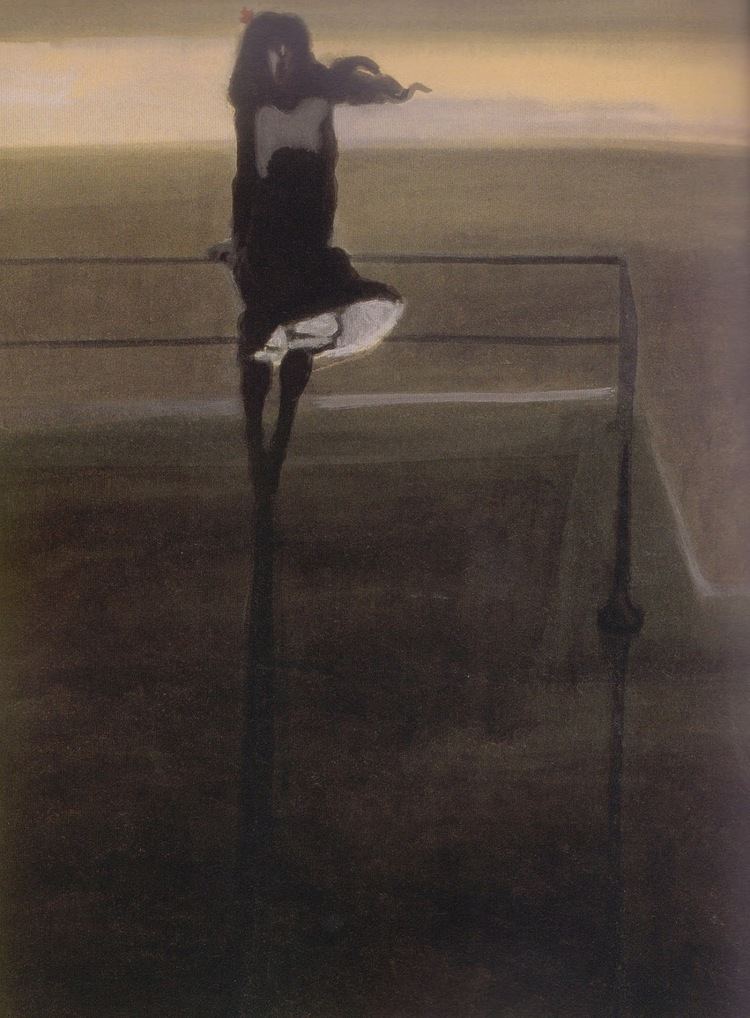
Watercolor, gouache, pastel, and charcoal—often in combination—were the means by which he produced many of his best works, among which are a number of monochrome self-portraits executed in the early years of the twentieth century. Spilliaert's expressive use of black finds parallels in the work of Odilon Redon, who was a significant influence. Frequently depicting a lone figure in a dreamlike space, Spilliaert's paintings convey a sense of melancholy and silence.
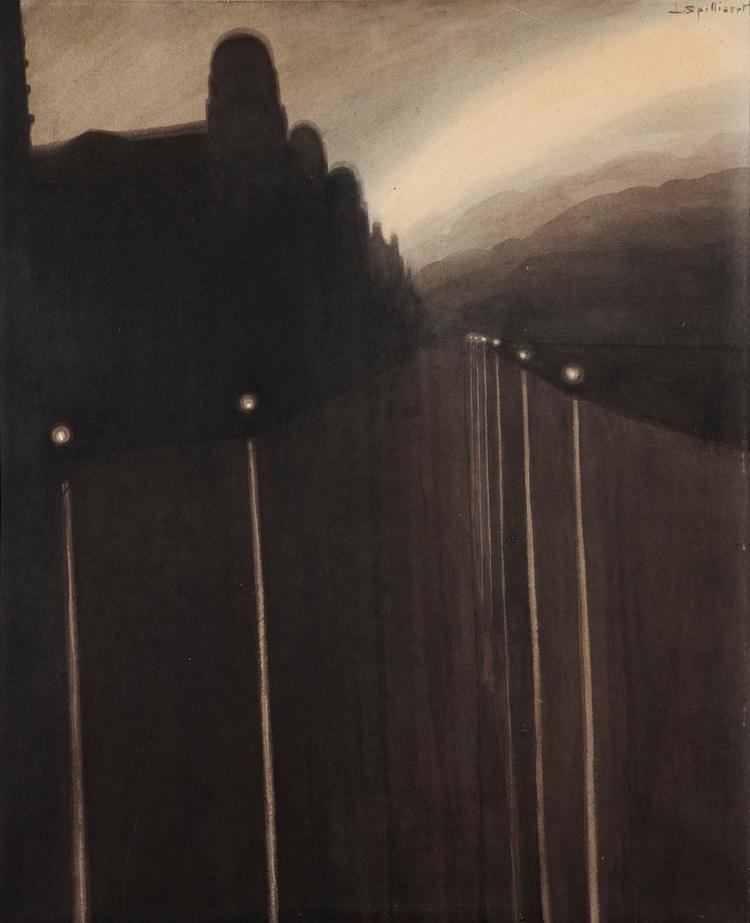
His later work shows a concentration on seascapes. He died on 23 November 1946 in Brussels.
Work
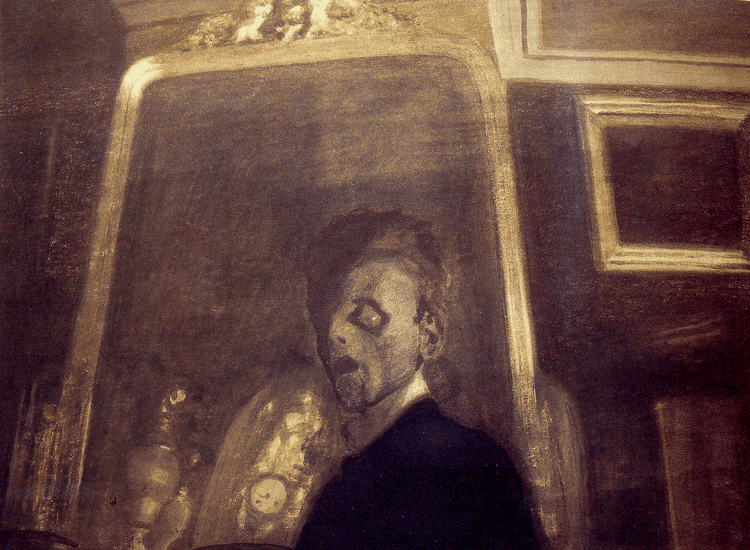
Among the best known works of Leon Spilliaert are the images "Digue la nuit" and "Clair de Lune et Lumieres". Both works are now exhibited at the Musee d' Orsay in Paris.
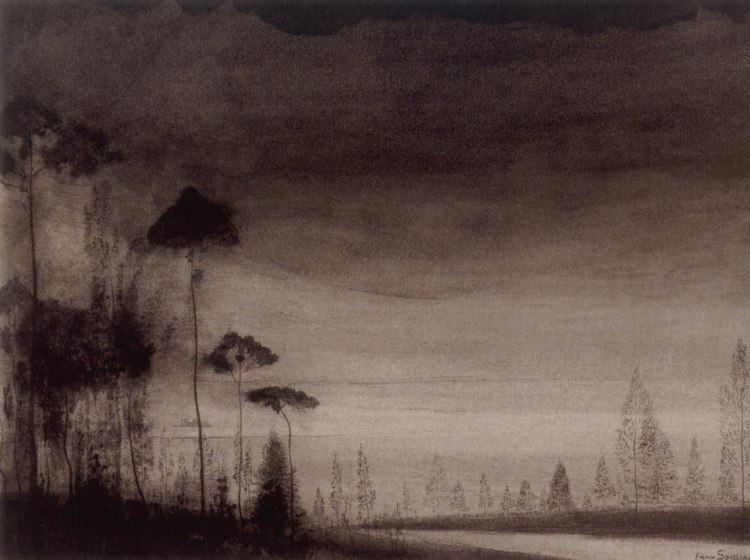
Most of Spilliaert's works are marked by an oppressive alien and elegiac atmosphere. This also applies to "Digue la nuit" from 1908. Here the painter removes any naturalistic characteristics of the landscape depicted in the image and creates a stylization in which the location, that serves as a template, is being completely redesigned. Redesigned in a way, by means of which he becomes the mirror of a state of mind. Solitude, mystery, hallucination - all this eats into the landscape.
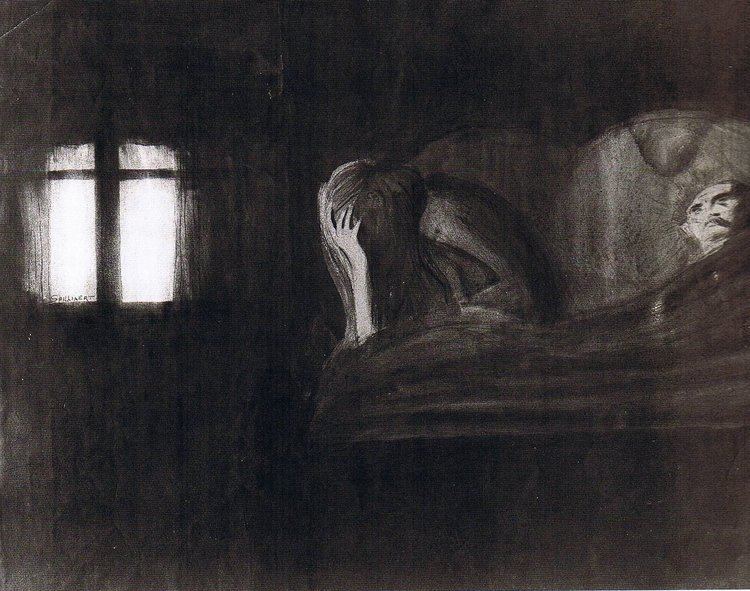
"Clair de Lune et Lumieres" was created around 1909, this cannot be determined exactly. Here the colonnade and arcades of the facade of the Kursaal ballroom on the seawall in Ostend served Spilliaert as a basis for the composition of this urban landscape. In this pastel painting he catches the eerie transformation of the architecture at night and the strangeness that comes from artificial lighting. With its cosmic, metaphysical traits "Clair de Lune et Lumieres" reveals the influence of Van Gogh. In particular, one feels partly reminded of "Starry Night" during perception.
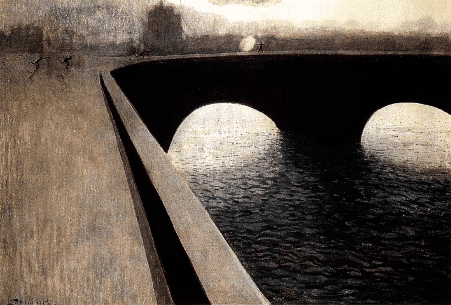
In the period 1902-1909 Spilliaert is concentrating on creating complex, profound self-portraits of introspective nature. His self-portrait of 1903 (Portrait de l'artiste par lui-meme) stands out here. In this picture Leon Spilliaert uses a dramatic self-presentation with ghostly apparitions in the background and a wry face in three-quarter pose. This image can be clearly identified as a prototype for the three-quarter-portraits, which Spilliaert created later.
